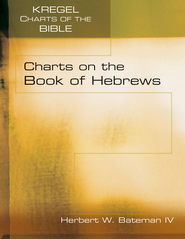INTRODUCTION
A letter from prison, yet its hallmark is joy. That is the
book of Philippians. It is part of the letters of Paul from a period when Paul
was confined to prison, known as the Prison Epistles. He experience was not
pleasant—suffering. His fate was the possibility of death (1:13, 17, 20-26).
FROM WHERE WAS IT WRITTEN?
The fact that Paul was in prison narrows down the possible
location for the writing of this letter. Scholars are divided concerning which
location he wrote the epistle. The main views are:
Ephesus.
Those who favor this position give the following reasons:
(1) the praetorium can point to the residence of the provincial governor in
Ephesians. (2) Timothy was with Paul in
Ephesus
(Acts 19:22; Phil. 1:1). (3) The distance between these cities was minimal and
eliminates the time problem required for multiple visits. (4) Evangelism went
on when Paul was at
Ephesus,
and contention over Paul and his teaching (Acts 19:2-9, 10, 25-26; Phil.
1:12-15). (5) Paul refers to being in
prison of several occasions (2 Cor. 1:8, 11:23). While this view has some
popularity, I do not hold this view. My objections are: (1) No mention of an
imprisonment at
Ephesus
is recorded in Acts. It rests on inference; it seems the one in
Ephesus was not major or
serious enough for Luke to record. (2) It omits any reference to the
collection, an important subject for Paul. Therefore it seems to indicate it
was already picked up and delivered by this time, which was not true while Paul
was in
Ephesus.
It certainly was not a life-death situation. (3) The tone of the text of
Philippians does not seem to fit the Ephesian situation, for the location where
Paul was writing indicates one of division and he writes harshly about the
Christians in that location, except for Timothy (Phil 1:15-1; 2:19-21). Based
on the overall picture of Philippians, this view is the weakest of choices.
Caesarea.
This view certainly makes more sense than
Ephesus.
This view has certain things going for it that
Ephesus does not have. (1) This was after the
collection had been delivered to the saints at
Jerusalem,
where he was arrested and transferred to
Caesarea.
(2) The two year imprisonment is recorded in Acts (Acts 24:27). Thus, there was
sufficient time for correspondence between the two. (3) Luke states that Paul
was imprisoned in the praetorium of Herod—the residence of the Roman procurator
and headquarters for the Roman army in
Palestine
(Acts 23:35). (4) It seems that Paul had already made his defense, and was
still in prison (Phil 1:7, 16) which harmonizes with Acts 24:1-17. This is not
clearly seen in the events of the Roman imprisonment. However, this view is not
foolproof. Objections include:
(1) The outcome of the trial is life or death, which no appealed could be made,
which was not true of the Caesarean trial (Phil. 1:19-26). (2) At the outcome
of the trial, Paul is expecting freedom (Phil. 1:25 cf. 2:24). Freedom did not
come at
Caesarea (Acts 26:32), nor could Paul
expect it since he appealed to Caesar. These two arguments seem to put this
view in question.
Rome.
This is the long held traditional view, dating back to at least the second
century. Paul was brought to Rome, after Caesarea, for another two year imprisonment (Act 28:30),
guarded by Roman soldiers (Acts 28:16), yet with freedom to meet with friends,
write and send letters, and to minister the gospel (Acts 28:17, 30-31). Here was the praetorium and people of Caesar’s
household (Phil. 1:13). However, this view is not without problems: (1) the
distance between the cities. (2) No indication Timothy was present in Rome. (3) Paul’s intent
to visit Philippi (Phil 2:24) and his intent to go to Spain from Rome
(Rom. 15:24-28) is a conflict. However, in the letter to Titus, written after the
Roman imprisonment, indicates Paul was in the east—Nicopolis, a neighbor of Philippi. (Titus 3:12; cf. 2 Tim. 3:9-22).
None of these positions are without difficulties. The
question is which view best fulfills what the text of Philippians reveals. The
following indicators must be taken into account:
- Paul
was in prison (1:7, 13, 14).
- The
location had a praetorium, and present at this location were members of
Caesar’s household (1:13, 4:22).
- Timothy
was present (1:1)
- The
location has a conflict among the Christians (1:14-17).
- He states
he plans to visit Philippi (2:24).
- Several
communications took place between the two parties.
Considering the different positions, and their difficulties,
there seems to be no reason to replace the traditional view. The basic facts
best square with the Roman view of origin. Its biggest competition is the
Caesarean view. However, Caesarea’s weakest and the
Rome’s strength is the life and death decision
of the trial. Plus, the references to the Praetorian guard and household of
Caesar best fit
Rome.
As Wallace says, there is “no
substantial evidence against the Roman theory.”


